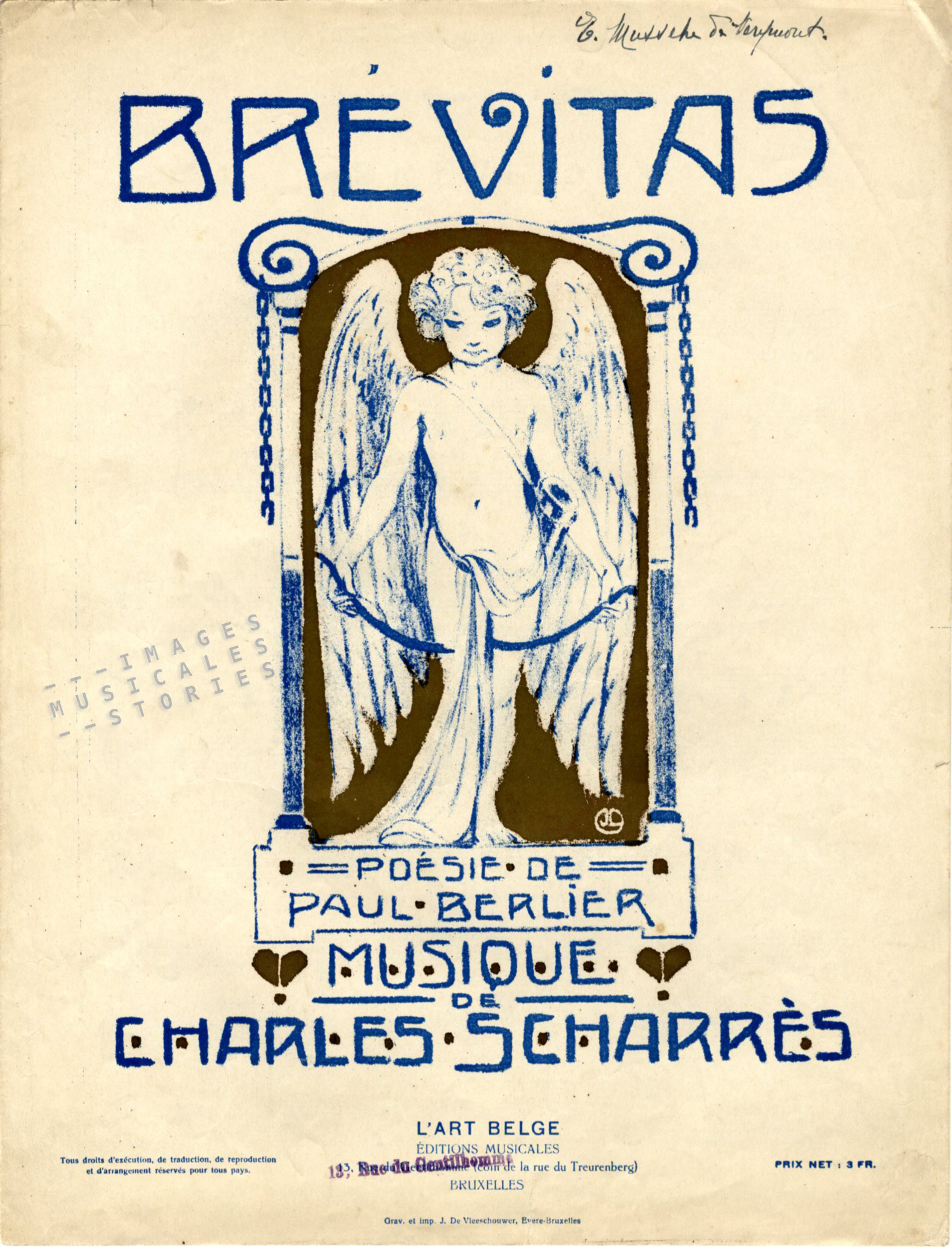
Already a lot has been documented on Jean Droit, the creator of the two sheet music covers at the beginning of this post. He designed posters and post cards, and illustrated magazines and books. Jean Droit (1884-1961) was a Frenchman and very much a patriot. He grew up in Belgium and always would keep an emotional bond with it.
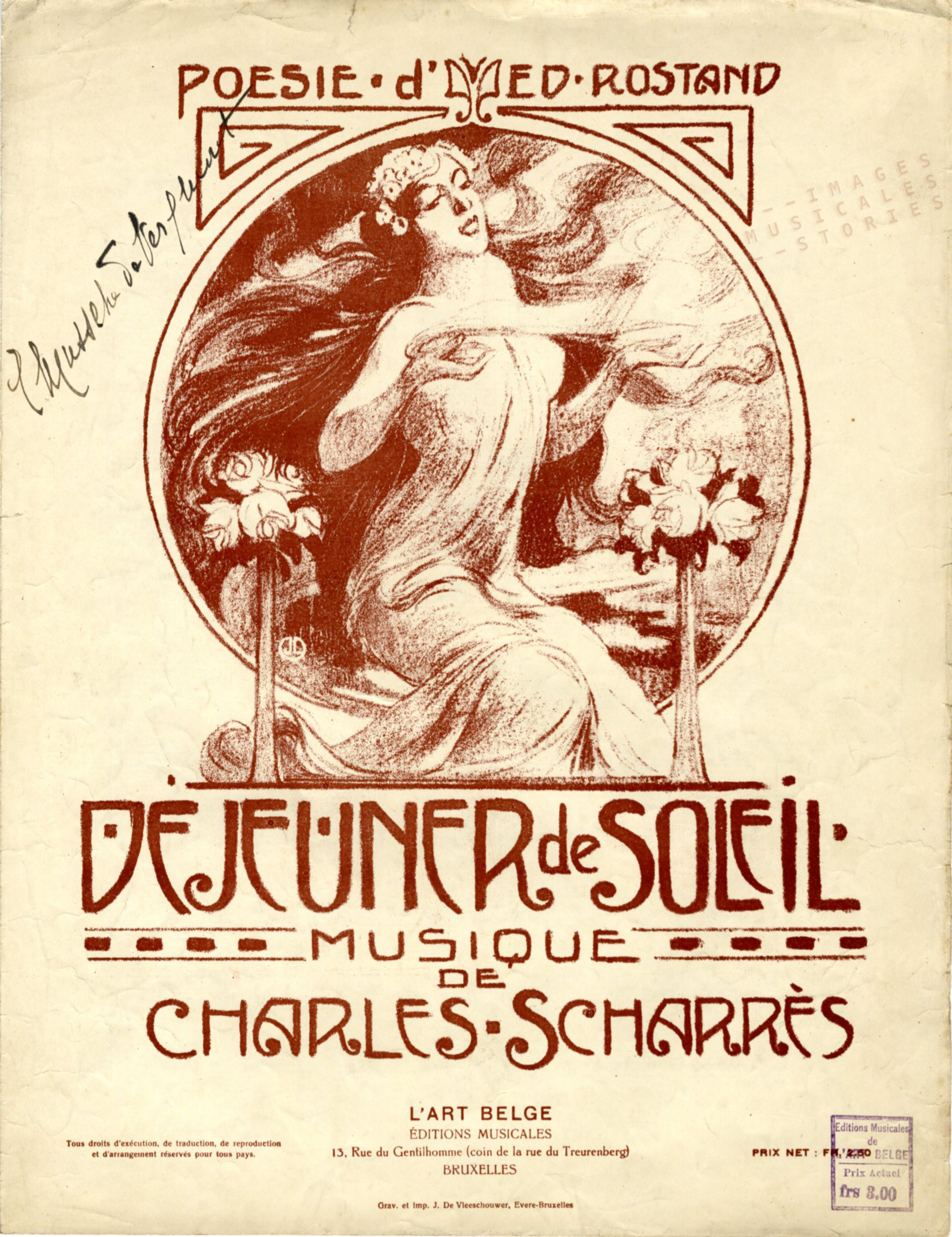
In WWI Jean Droit actively fought at the front, and regularly acted as war journalist sending reports and drawings from the trenches to L’Illustration. He got wounded many times, and received the appropriate honours and decorations. Again in WWII, Jean Droit joined the army to defend his country.
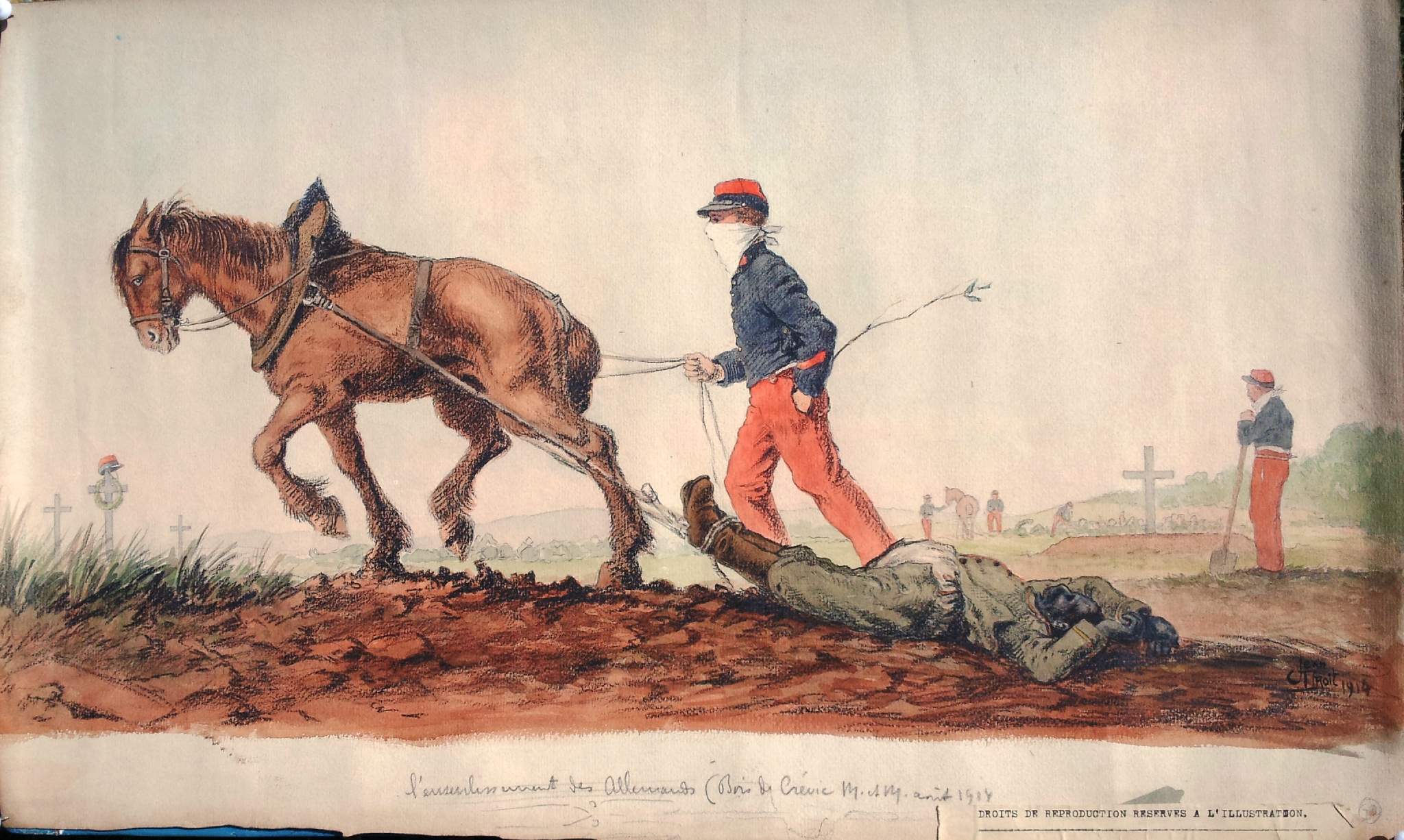
Being a lover of nature and forest Jean Droit became a pioneer and fervent defender of the Boy Scout movement in France and Belgium. The motto ‘Once a Scout, always a Scout‘ certainly applies to him. Shortly before his death, at the age of 77, Jean Droit aka Talkative Woolf attended his last camp.
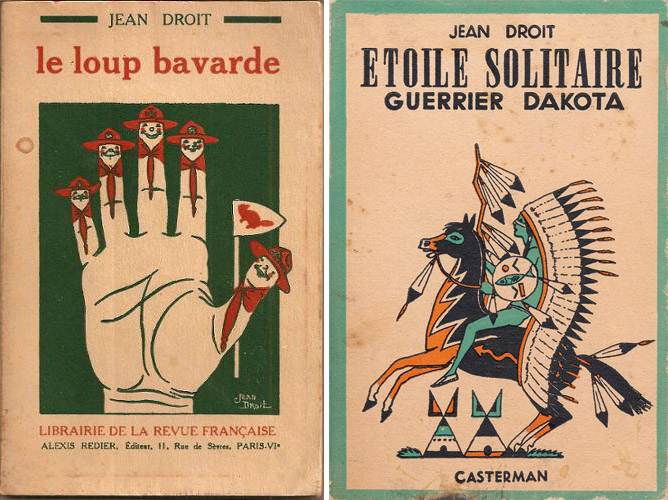 He wrote and illustrated many books for children and teens on how to be the perfect scout, how to wear your uniform correctly and other essentials of Scoutism.
He wrote and illustrated many books for children and teens on how to be the perfect scout, how to wear your uniform correctly and other essentials of Scoutism.

For many Boy Scouts at that time, an ‘Indian‘ was a hero and a symbol of the closeness to nature and the great outdoors. Likewise, Jean Droit had a fascination for Native Americans since his childhood and for emulating Natives who roamed the Great Plains of North America.
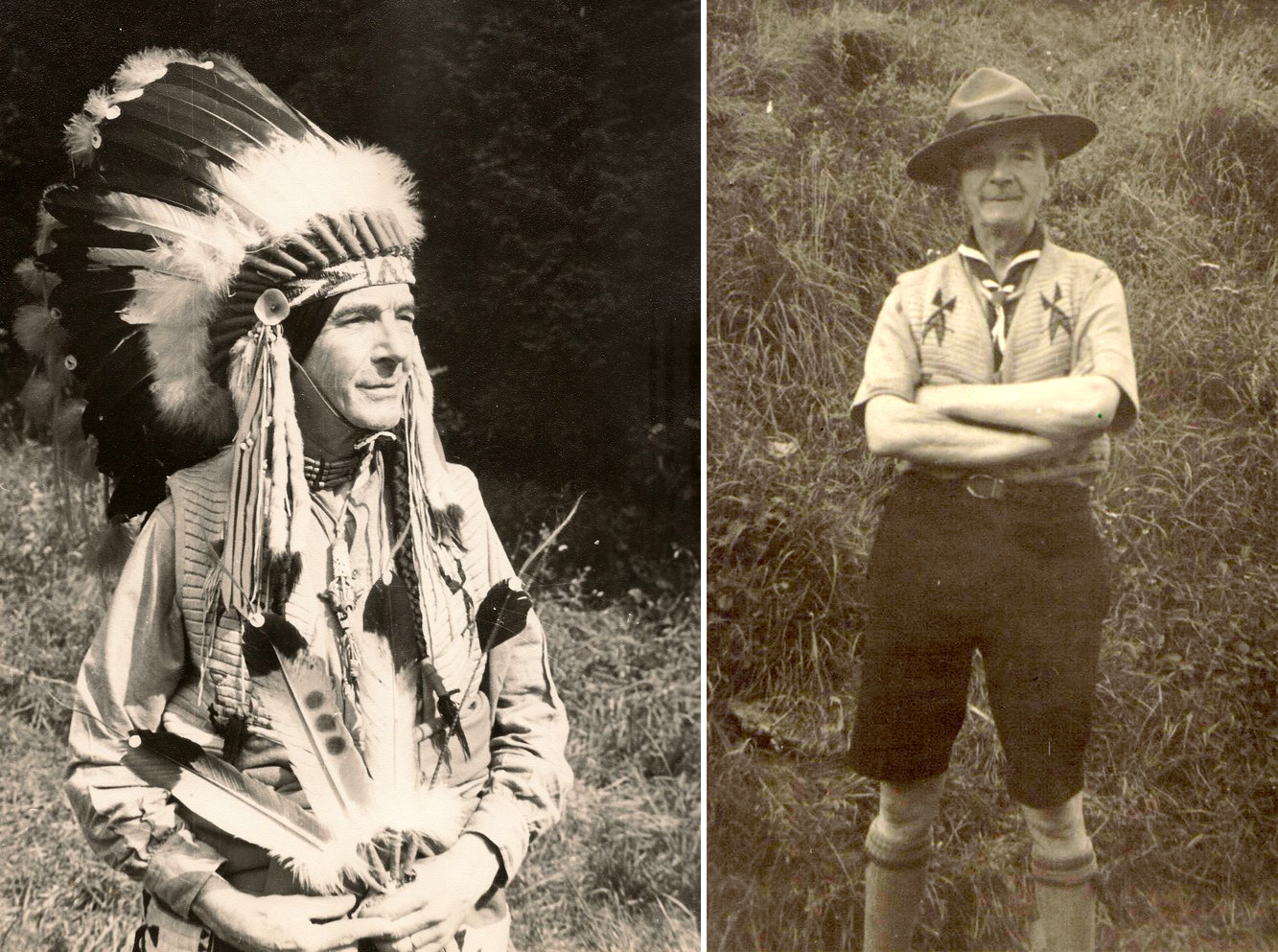
In 1929, together with the like-minded Paul Coze, he founded the study group Wakanda. Its goal was the study of the life and art of the Native Americans through exhibitions, performances, camping, games, and outdoor life, and through a lasso club. For the lasso club they weirdly had to change roles and become a cowboy.
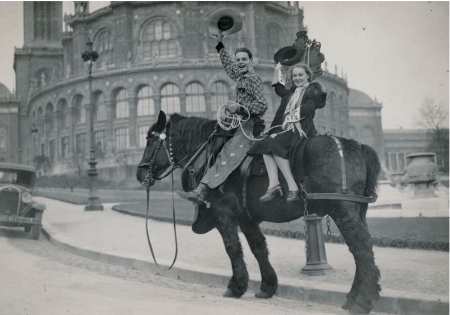
Paul Coze aka Panther on the Lookout, had started Boy Scoutism in France and tried to introduce Indianism to the great dismay of the Catholic clergy.
In Paris Paul Coze and Jean Droit were inspired by a Yakima chief Oskomon (his name meaning green maize) who, according to his professional partner Molly Spotted Elk, was neither a Yakima nor a chief. Nonetheless Paul Coze introduced Charlie Oskomon into the Parisian high society where he met his patron Mme Clement-Herscher. She would manage his career until 1939.
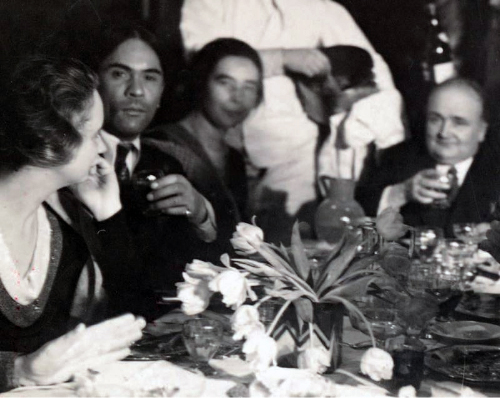
Mme Clément introduced her protégé Chief Oskomon to Molly Spotted Elk. Both soon started performing together. The handsome vaudeville dancer and singer Charlie Oskomon, who had previously performed as a Show Indian in America, charmed the Parisian beau monde. A delicate marquis remembered that he felt overcome by a deep vertigo watching Chief Oskomon’s athletic body with its virile force and its dramatic and violent expression. Another contemporary wrote: “He dances with the ease of a young savage god. He seems impregnated by a holy light.”

Charlie Oskomon with his noble carriage made a great impression on Jean Droit and Jean Coze, and they became friends. He would frequently perform in their Cercle Wakanda, and they published his poems. These were translated in French by the marquise de Luppé, another one of his female patrons. According to Jean Coze’s wife, Oskomon was ill-tempered and was being kept by Mme Clément and a bunch of other crazy old women. In that way he earned enough to live very comfortably in Paris.
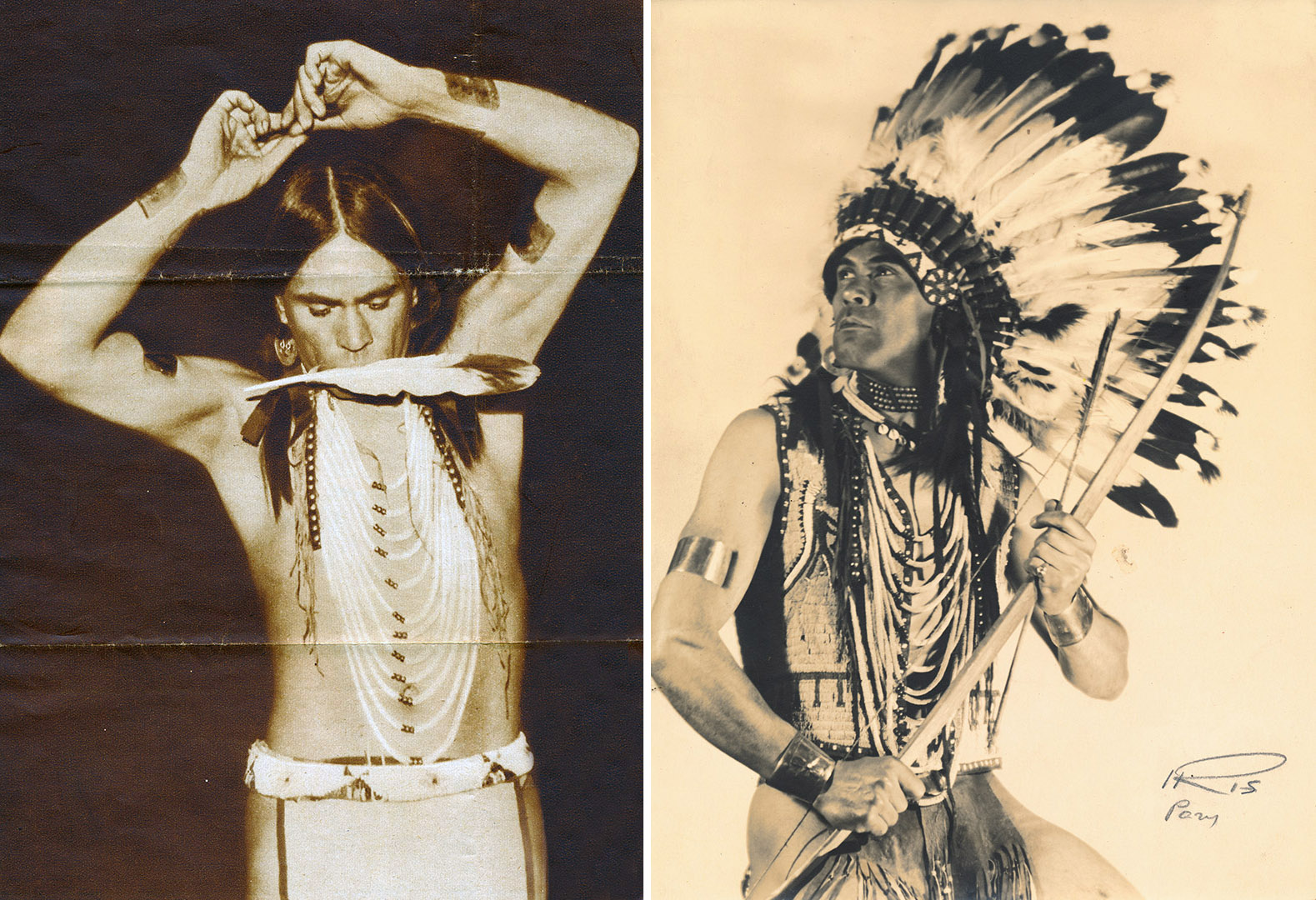
In 1931 Chief Oskomon’s partner Molly Spotted Elk performed at the Exposition Coloniale Internationale, a six-month colonial exhibition held in Paris. This event attempted to display the diverse cultures and immense resources of France’s colonial possessions. At the same time Chief Oskomon would perform at the parallel Exposition de la Mission, organised by his pal Paul Coze.

Between the crackling of the 78 rpm disc you can hear Chief Oskomon singing a sun dance, albeit arranged and orchestrated by the aforementioned Mme Clément who happened to be a composer. Years later in 1960, Jean Droit would meet Charlie Oskomon again in New York where he was working as a doorman.
It is said that Jean Droit was deeply Catholic. All the more surprising to find numerous lightly erotic images in his oeuvre. One of the nicest is this one for L’Escapade by Henri De Regnier. A reader of these pages might remember Henri De Regnier of the Académie Française as the adoptive father of Tigre, another sheet music illustrator.

To our surprise we found in our archives a small collection of eight catalogue cards delicately drawn by Jean Droit. They were printed by the famous Bénard lithographer from Liège for the elegant fur stores of Charles & Cie.
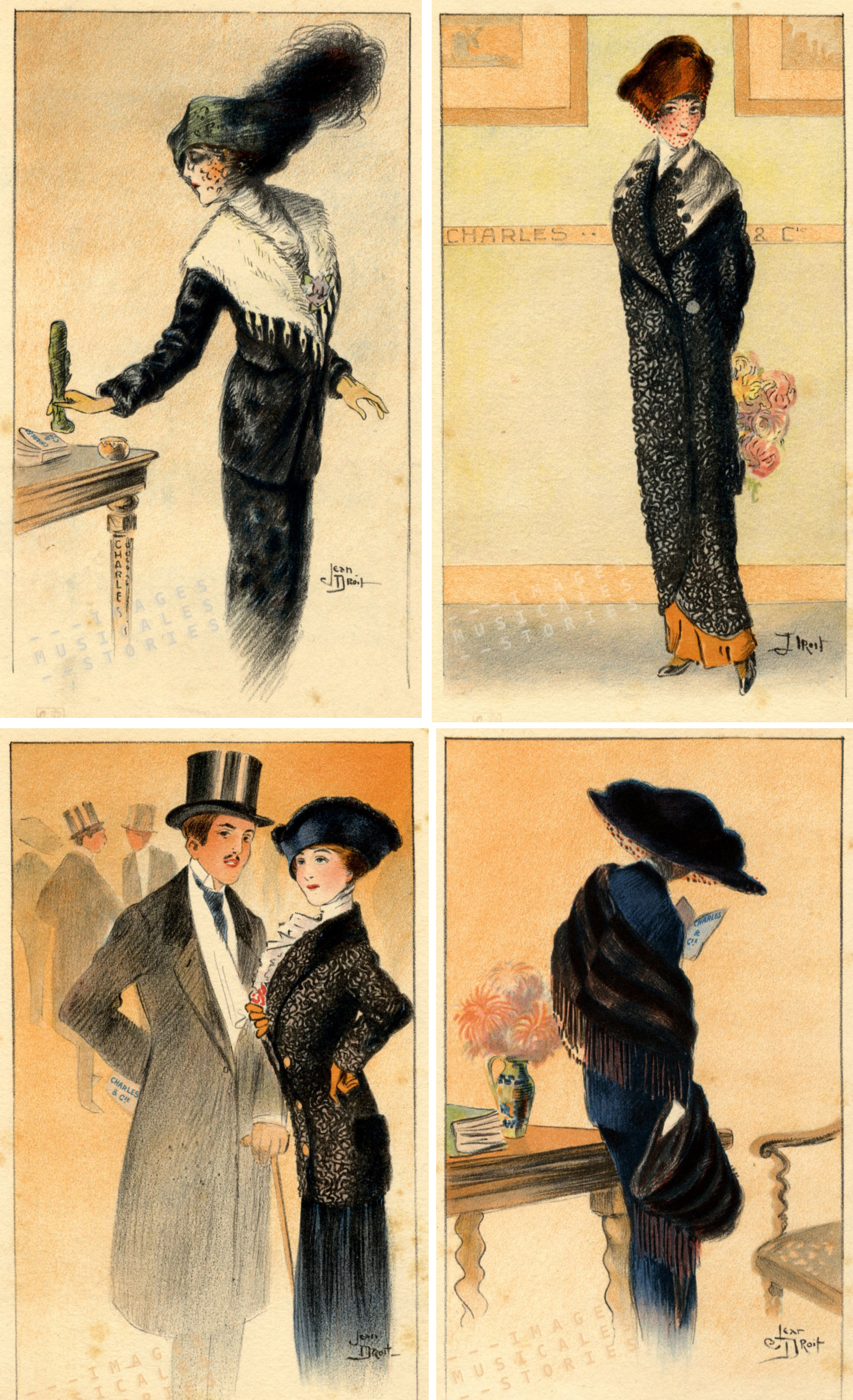
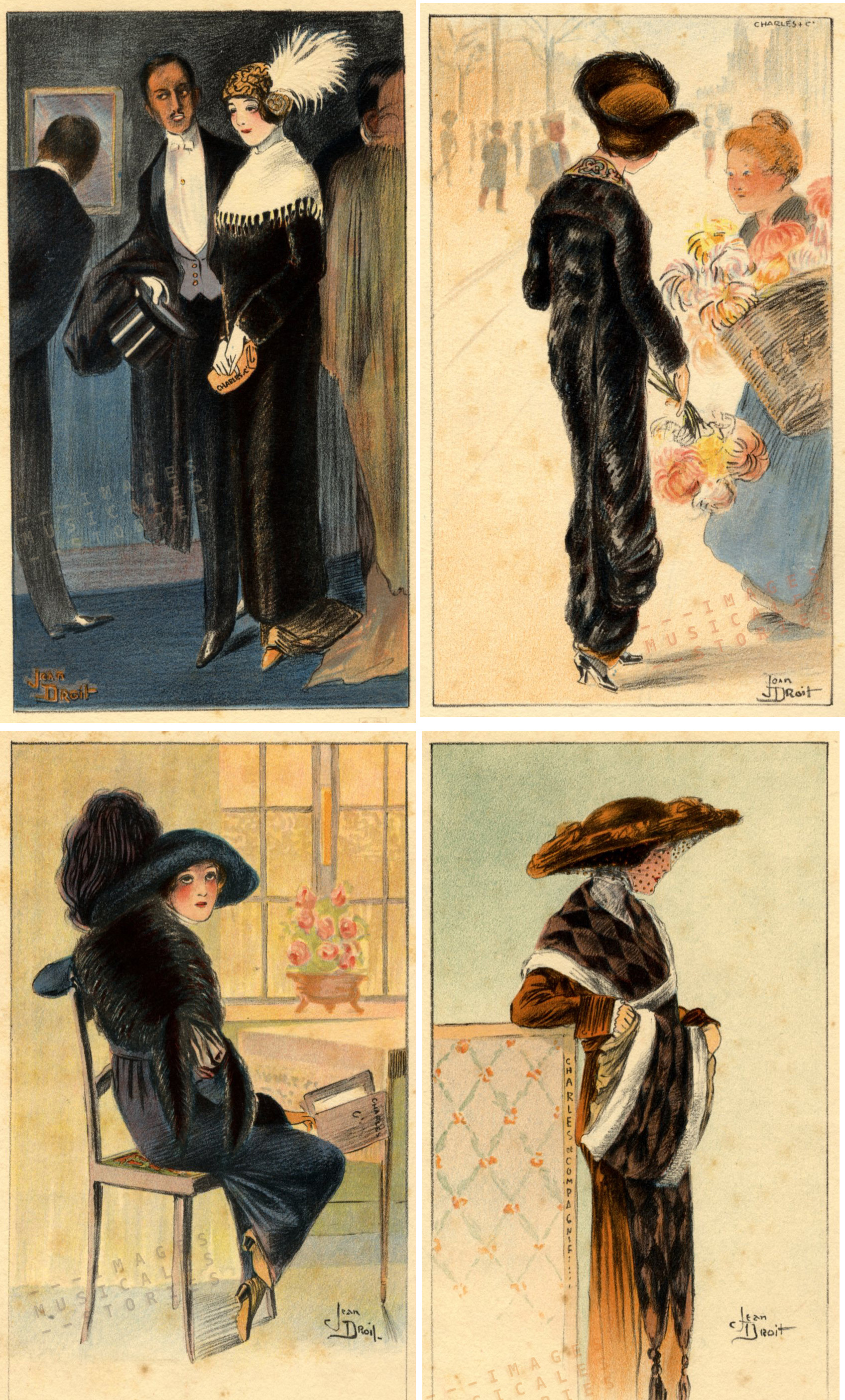
Hey, why not some music after this avalanche of images? We find Serge Gainsbourg appropriate: he had an ugly fight in the media with Michel Droit, son of Jean Droit, who as a conservative writer and journalist greatly took offense at the reggae version of the Marseillaise. Michel Droit wrote in Figaro Magazine (1979): “Quand je vois apparaître Serge Gainsbourg je me sens devenir écologiste. Comprenez par là que je me trouve aussitôt en état de défense contre une sorte de pollution ambiante qui me semble émaner spontanément de sa personne et de son œuvre, comme de certains tuyaux d’échappement… “(*).
Of course Gainsbourg reacted furiously in the media. Et cetera !
(*) Michel Droit: When I see Serge Gainsbourg appear, I feel myself become an environmentalist. Understand by this that I instantly find myself in a state of defence against a kind of atmospheric foulness that seems to spontaneously emanate from his person and work, as from certain exhaust pipes…

Beste Divine en Frank,
Deze keer mijn favoriete onderwerp de Indianen. Fraai hoor !
Jean Droit was my Ancestor, I really appreciate your website and and all the wonderful stories and images of his art, thank you! I too am an illustrator who very much loves nature, you can see my works on the web if you desire, merci
Also Uncle Jean finished the war as Knight of the Légion d’honneur and holder of the cross of French and Belgian war with four citations.